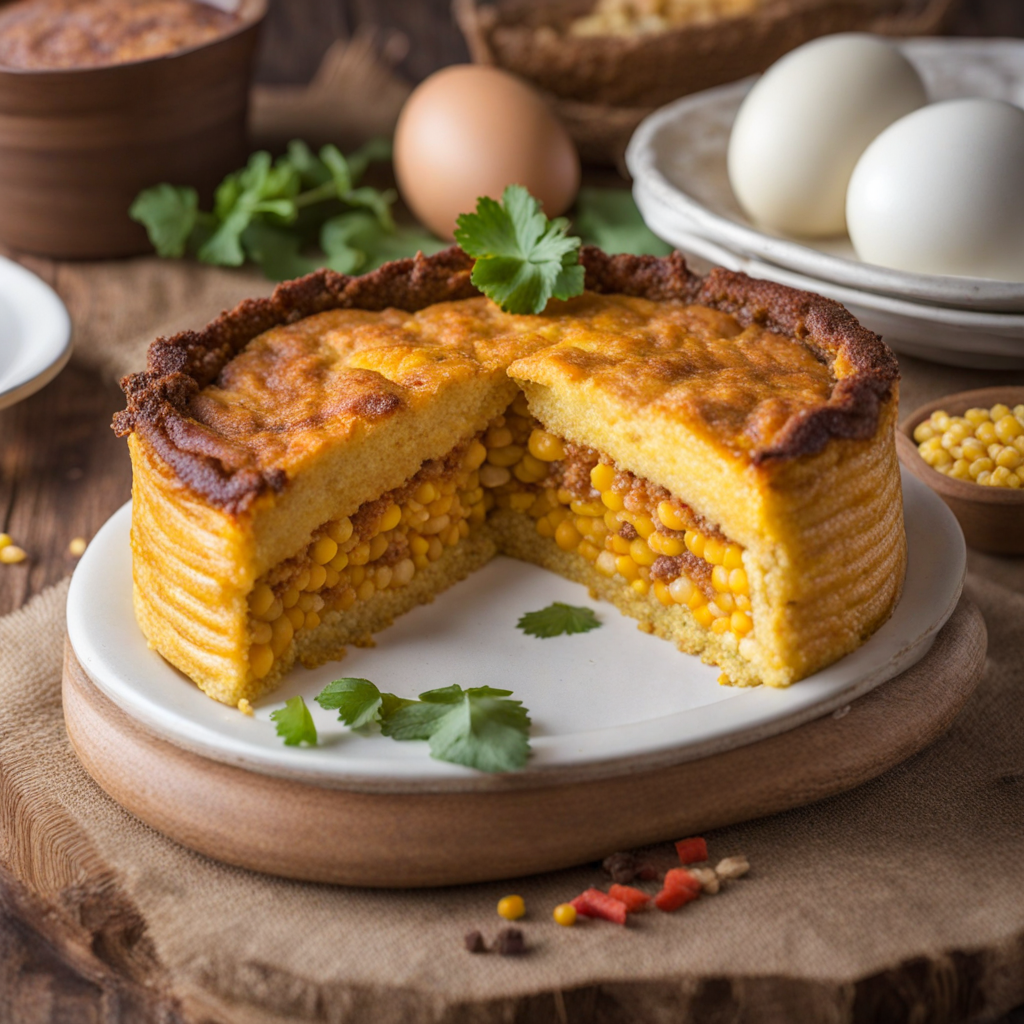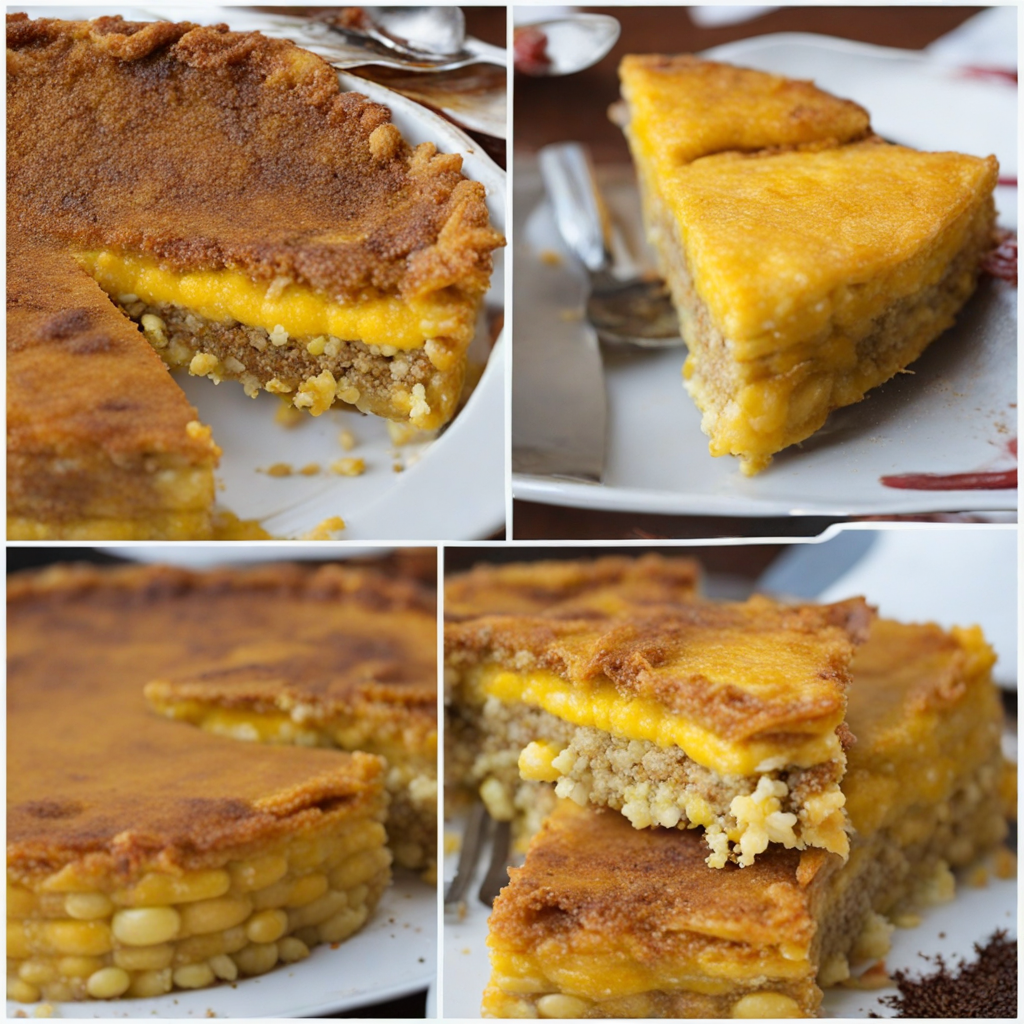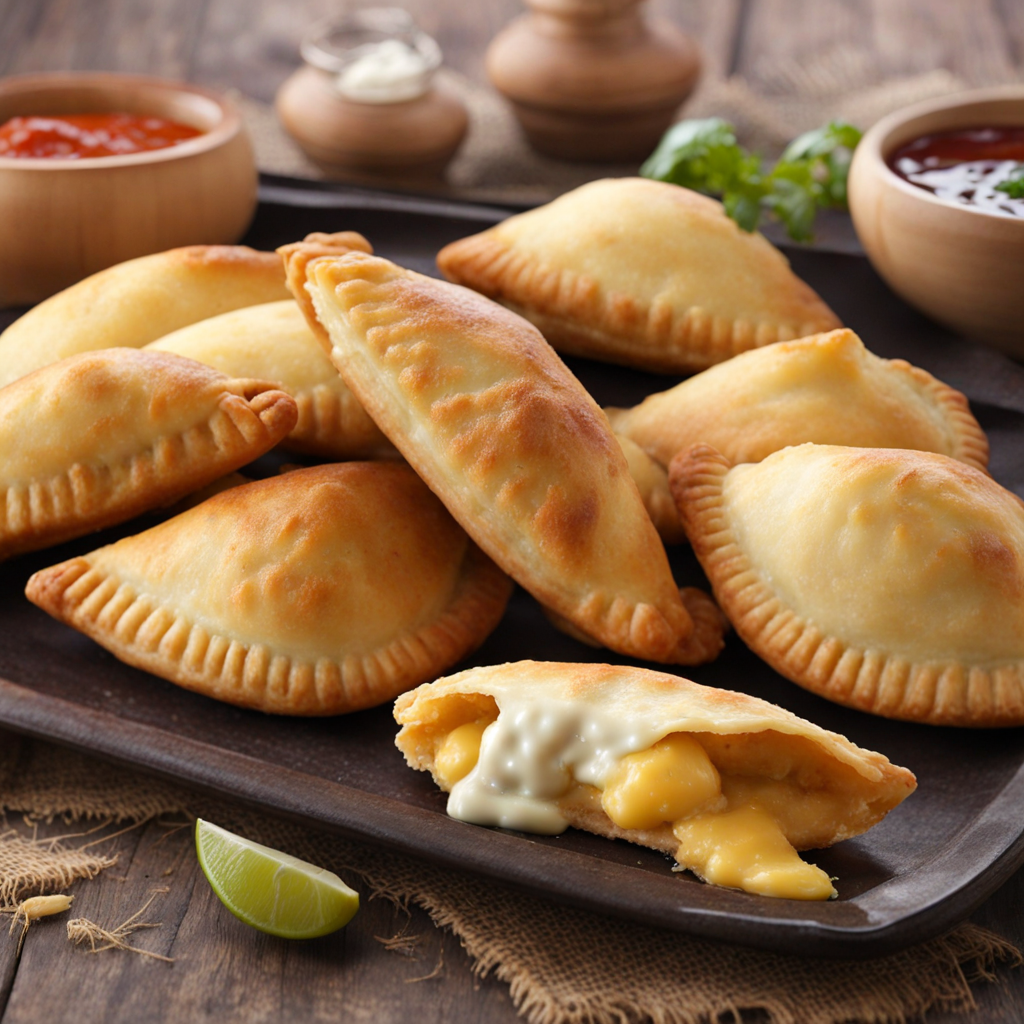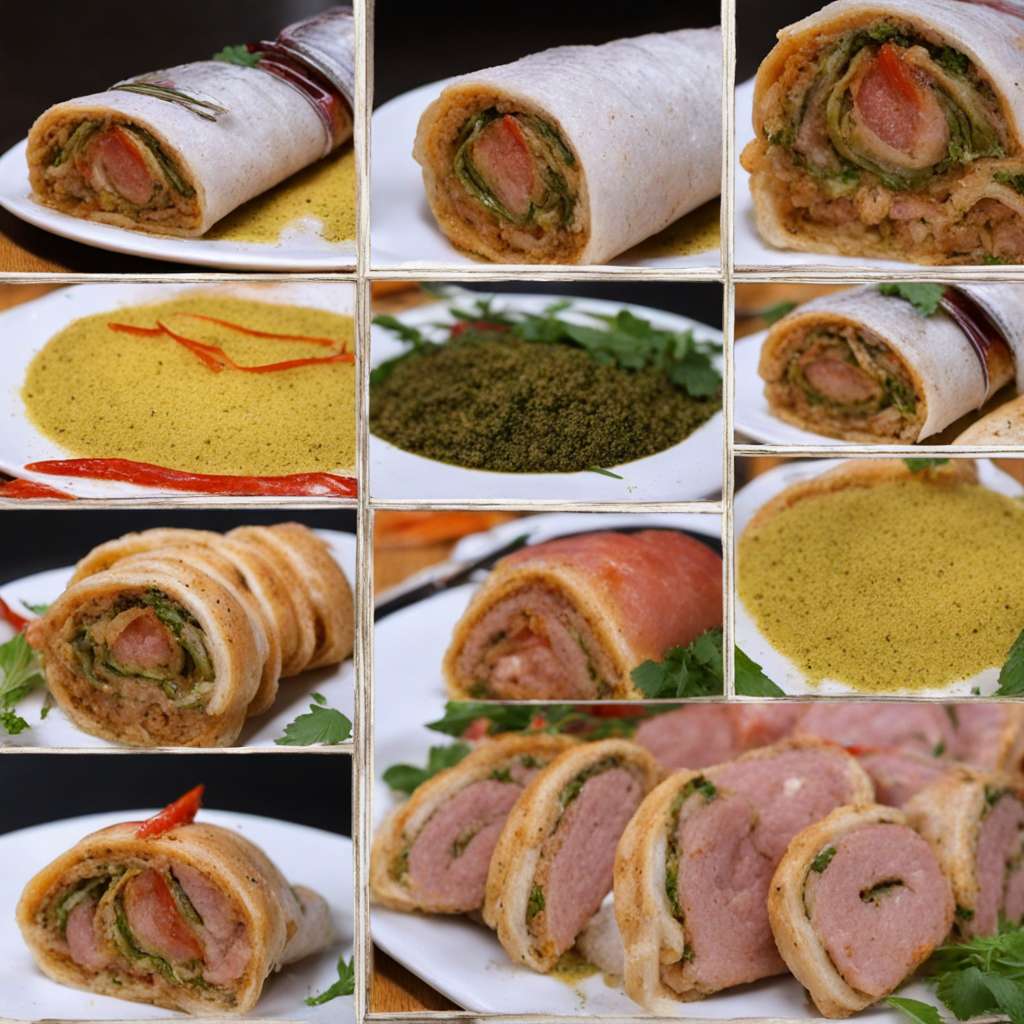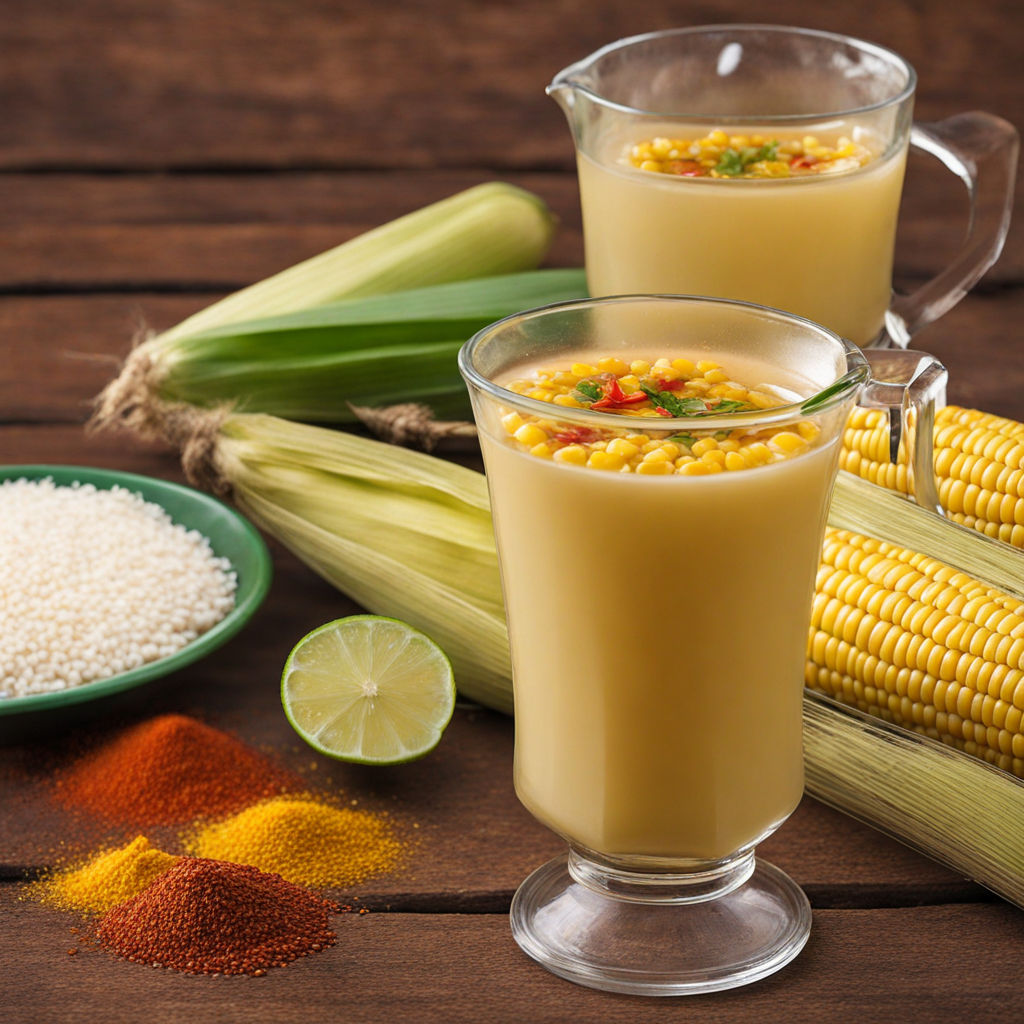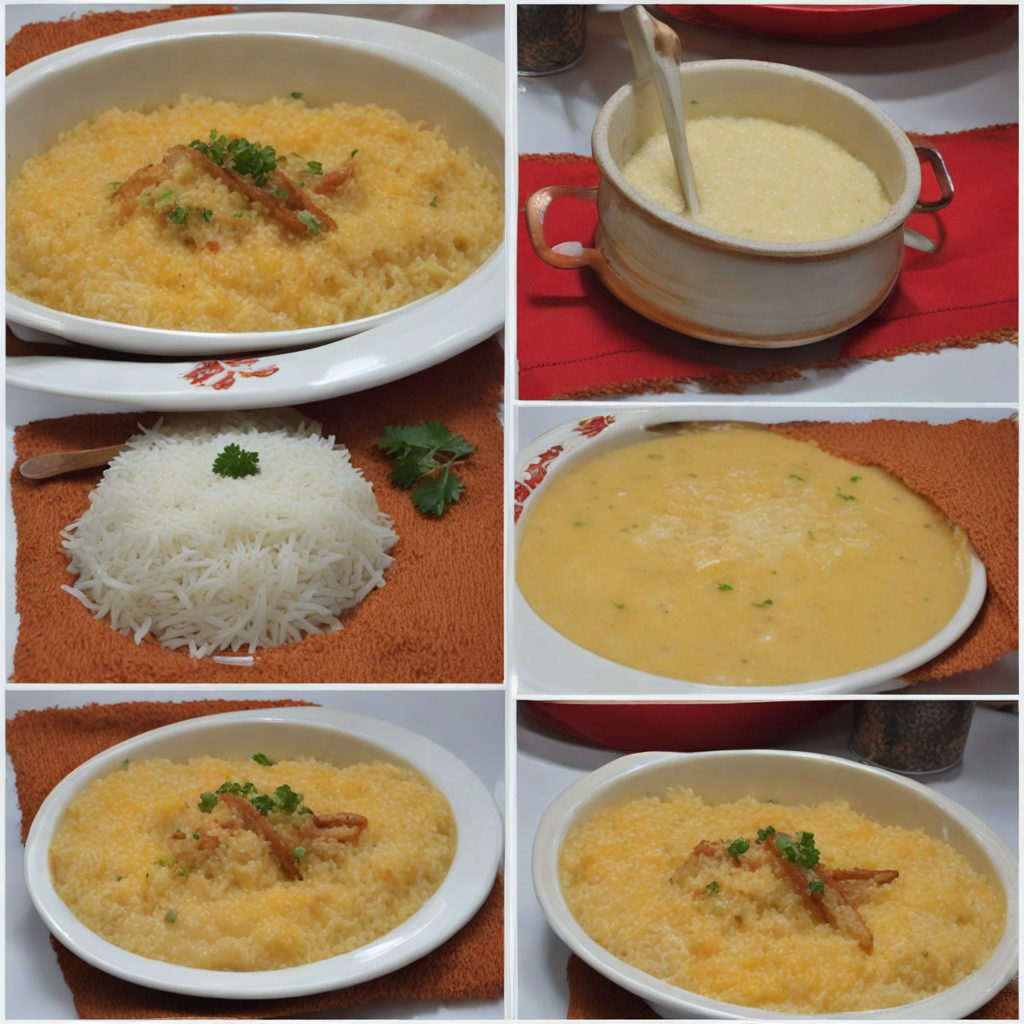Pastel de Choclo
Pastel de Choclo is a delightful Bolivian dish that showcases the rich flavors and textures of corn. At its core, this savory pie features a base of ground or blended fresh corn, which is sweet and slightly creamy. The corn is often mixed with ingredients like cheese, milk, or butter, creating a velvety filling that is both comforting and satisfying. This dish is a perfect representation of Bolivia’s agricultural abundance, highlighting the importance of corn in the country’s culinary traditions. Layered within the corn mixture are typically ingredients like seasoned ground meat, which might include beef or chicken, along with onions, spices, and sometimes olives or hard-boiled eggs for added flavor complexity. The combination of the sweet corn base with the savory filling creates a harmonious balance that is both hearty and indulgent. As the pastel bakes, the top develops a golden crust, while the interior remains moist and full of flavor, making each bite a delightful experience. Pastel de Choclo is often served warm, making it a popular choice for family gatherings or festive occasions. Accompanied by a side salad or a tangy salsa, it becomes a well-rounded meal that invites exploration of Bolivian cuisine. Those who indulge in this dish will be treated to a unique taste that reflects the vibrant culture and culinary practices of Bolivia, making it a must-try for food lovers seeking new and exciting flavors.
How It Became This Dish
The History of Pastel de Choclo: A Culinary Gem of Bolivia #### Origins Pastel de Choclo, a delightful corn pie, is a cherished dish in Bolivia, particularly in the Andean region. Its roots are deeply entwined with the agricultural practices and culinary traditions of indigenous cultures. The use of corn, or "choclo" in Spanish, dates back thousands of years, having been cultivated by the ancient civilizations of the Americas long before European contact. Corn is not only a staple food but also a symbol of life and sustenance for many indigenous groups in the Andes. The dish itself is believed to have emerged from the fusion of indigenous ingredients and cooking techniques with Spanish influences introduced during the colonial period. The Spanish brought with them a variety of ingredients, including meat, dairy, and spices, which were gradually integrated into local cuisine. This blending of cultures gave rise to unique culinary creations, with Pastel de Choclo standing out as a perfect example of this gastronomic synthesis. #### Cultural Significance In Bolivian culture, Pastel de Choclo transcends mere sustenance; it represents the essence of community, tradition, and identity. The preparation of this dish often involves family gatherings, where generations come together to share recipes, stories, and laughter. It is common to find Pastel de Choclo served during festive occasions, such as weddings, harvest celebrations, and national holidays. The dish embodies the spirit of Bolivian hospitality, where sharing food is a way to express love and friendship. Moreover, Pastel de Choclo is a reflection of Bolivia's agricultural diversity. The country is home to numerous varieties of corn, each with distinct flavors and textures. The use of local produce not only supports the economy but also fosters a sense of pride in Bolivian heritage. As a result, Pastel de Choclo has become a symbol of national identity, celebrated in regional festivals and culinary competitions. #### Ingredients and Preparation Traditionally, Pastel de Choclo is made using a combination of fresh corn, cheese, and a variety of meats, typically chicken or beef. To prepare the dish, the corn is usually ground into a coarse dough, which serves as the base. This dough is then layered with a filling of seasoned meat, often cooked with onions, garlic, and spices, along with fresh herbs such as cilantro. A generous topping of cheese adds richness and flavor, while the entire pie is baked until golden and bubbly. Variations of Pastel de Choclo can be found throughout Bolivia, with each region putting its unique twist on the dish. In some areas, it may be prepared as individual servings in small ramekins, while in others, it is made in large family-sized portions. The versatility of Pastel de Choclo allows for experimentation with different ingredients, leading to an ever-evolving tradition. #### Evolution Over Time As Bolivia has modernized and globalized, so too has the preparation and consumption of Pastel de Choclo. In urban areas, the dish has found its way into restaurants and cafes, where chefs reinterpret traditional recipes to cater to contemporary tastes. While some establishments strive to maintain authenticity, others incorporate international flavors and techniques, creating fusion dishes that appeal to a broader audience. The rise of food tourism in Bolivia has also played a significant role in the evolution of Pastel de Choclo. As travelers seek authentic culinary experiences, they are drawn to traditional dishes that tell the story of a place. Pastel de Choclo has emerged as a must-try item for visitors, often featured in cooking classes and food tours that highlight the richness of Bolivian cuisine. Social media and the internet have further contributed to the dish's popularity, allowing home cooks and chefs alike to share their interpretations of Pastel de Choclo with a global audience. Online platforms have facilitated the exchange of recipes, tips, and cultural anecdotes, creating a virtual community of enthusiasts united by their love for this iconic dish. #### Challenges and Resilience Despite its popularity, the journey of Pastel de Choclo has not been without challenges. The impact of climate change on agriculture poses a significant threat to corn production, which could affect the availability of key ingredients for the dish. Additionally, the rise of fast food culture and processed foods has led to a decline in traditional cooking practices among younger generations. However, efforts to preserve and promote Bolivian culinary heritage have gained momentum in recent years. Initiatives aimed at educating young people about traditional cooking techniques and the importance of using local ingredients are helping to sustain the legacy of Pastel de Choclo. Community-driven projects and culinary schools are also working to revive interest in traditional dishes, ensuring that they remain a vital part of Bolivia's cultural landscape. #### Conclusion Pastel de Choclo is more than just a dish; it is a narrative woven into the fabric of Bolivian culture. Its origins reflect the rich agricultural heritage of the Andes, while its evolution illustrates the resilience of culinary traditions in the face of modern challenges. As Pastel de Choclo continues to be enjoyed by generations, it serves as a testament to the enduring power of food as a unifying force, bridging the past and the present. In a world increasingly dominated by globalization, Pastel de Choclo stands as a delicious reminder of the importance of cultural identity and the joy of sharing meals with loved ones. Whether enjoyed at a festive gathering or savored in a quiet moment at home, this beloved corn pie remains a cherished emblem of Bolivian tradition, inviting all who encounter it to partake in its rich history and vibrant flavor.
You may like
Discover local flavors from Bolivia


